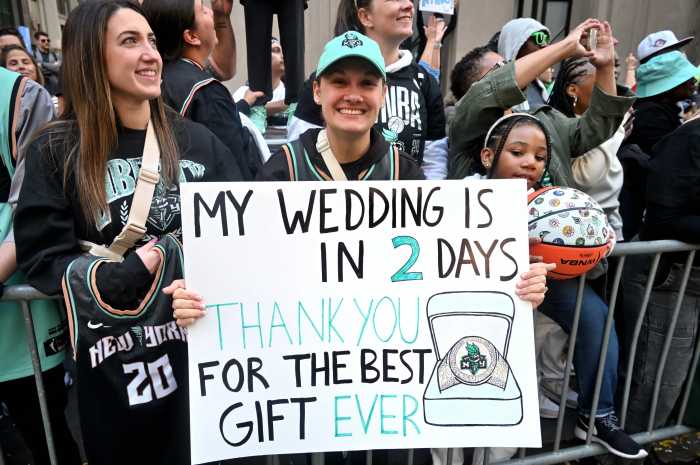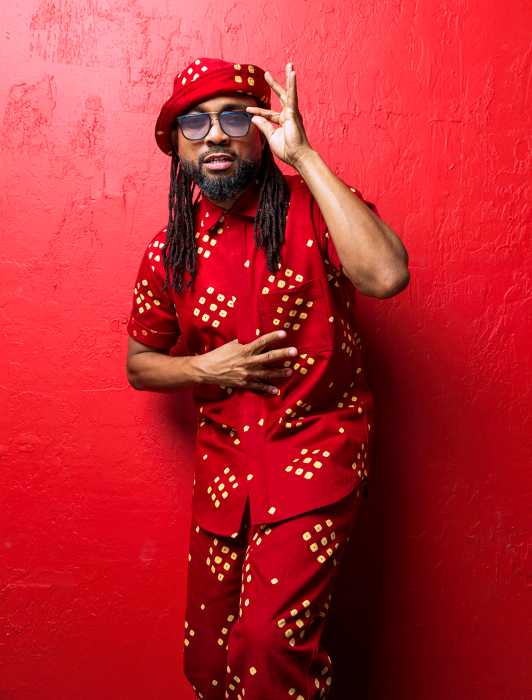“Talk about every gay guy’s dream,” boasts native New Yorker Steven Goldstein. “Our wedding outdid Liza Minelli’s.”
“And my husband,” says Steven’s partner Daniel Gross, “is every bit as gay!”
Steven and Daniel’s decision to tie the knot in style—and their bold sense of humor— became something much more than just their friends and family celebrating. Not only did they legally unite (in Vermont, where else?), but they shattered a previously intransigent social barrier: getting their wedding written up in The New York Times.
Only a few weeks after the “paper of record” announced they would start including same-sex couples in the Sunday Styles section, Steven and Daniel garnered several paragraphs and a photo. Their union after ten years together may be most important to them, but to the millions of Times readers, it was equally historic.
The relationship between The New York Times and the gay community has at times been strained, though there has also been marked progress, much the same way, in fact, that Daniel describes his relationship with his mother when he told her he was gay.
“She was the champion of a couple of my cousins who are gay—the fabulous accepting aunt—but it was a little different when it was in her house,” Daniel says. “It took her a while to come around.”
The couple began their dialogue with The Times in July via email.
“We are asking you to change The New York Times policy,” they wrote to executive editor Howell Raines, managing editor Gerald Boyd, and assistant managing editor Allan M. Seigal, “to publish our Civil Union and Jewish ceremony announcement.
“Hubris is a most unbecoming quality, so we—two loyal Times readers named Daniel Gross and Steven Goldstein—beg your indulgence for the question we’re about to pose. If one of us were Danielle or the other, Stephanie, would we make it into the paper?”
That Times’ wedding announcements often exude the sort of monied pedigree many people run from was beside the point. Steven and Daniel wanted in and they were determined, so they continued their letter in a way they felt would appeal to The New York Times’ sense of history, and the struggle for social justice and civil rights.
“If there were still, heaven forbid, miscegenation laws on the books,” they wrote, “would The New York Times not publish the announcement of an interracial couple?”
The couple, of course, was also able to submit the sorts of “qualifications” which keep Times editors invited to all the best parties.
Daniel is a 32-year-old vice president at General Electric Capital. He graduated Phi Beta Kappa from Yale College and holds an M.B.A from the Yale School of Management, as well as a Master of Environmental Management, also from Yale. Daniel was a Fulbright Scholar in Thailand and later Class Day speaker at Yale. His father is a former assistant state’s attorney in Chicago. His mother founded a nationally distributed line of clothing.
Steven, age 40, is chairman of Attention America, a New York consulting firm. He was co-campaign manager for New Jersey Senator Jon Corzine’s 2000 election race and previously served New Jersey Senator Frank Lautenberg and New York Attorney General Eliot Spitzer as press secretary. He served as a lawyer on the U.S. House Judiciary Committee with then-Congressmember Charles Schumer. Before he went into politics, Steven won 10 local Emmy awards as a news producer at ABC in Washington. He graduated summa cum laude and Phi Beta Kappa from Brandeis University. He holds masters degrees from Harvard’s Kennedy School of Government and the Columbia School of Journalism; his J.D. is from Columbia Law School. Steven’s father founded a court reporting company in Manhattan. His mother works with a foundation for the disabled.
The Times’ reaction to the Steven and Daniel’s email was swift and surprisingly transparent.
“You make your case eloquently, and your resumés merit our respect and admiration,” Seigal wrote back. “If we were teetering on the verge of a decision to begin publishing same-sex partnership announcements, it would please me, at least, to make yours the path breaker. Our current discussions are at least open to the possibility of change… Your August 31 date is likely too soon.”
Steven and Daniel admit they launched their Times drive with considerable optimism. They had purposefully avoided affiliating themselves with a local or national gay rights organizations. They wanted to avoid having their request viewed as an aggressive act. In fact, the couple believes that if they had made their case as part of a politicized effort the outcome would not have been the same.
Even though Seigal’s letter promised nothing, the couple remained upbeat.
“The response alone was a source of pride,” says Daniel. “It gave us a some sense of victory.”
Then they heard nothing until August 18. As is his habit every Sunday morning, Steven, nude and more than a bit proud of his newly sleek body (“I lost 78 pounds,” he says, “just for the wedding”), wandered to the front door of their Brooklyn Heights apartment to pick up the newspaper. That Sunday The Times announced the policy change that the editors had previously told the couple would probably come too late.
Steven says it was the first thing he saw and he dashed into the bedroom bouncing up and down, completely overjoyed.
“We were thrilled at what the announcement meant for our community,” says Daniel whose eyes tear slightly when he becomes passionate. “These announcement—gradually appearing in newspapers all over the country—are the most important thing for lesbian and gay civil rights.”
A battle had been won, but neither Steven nor Daniel were sure the policy change would guarantee an inclusion of their announcement. The couple sent a reminder email to Seigal about the commitments he had made in his July response. The next Sunday, the couple received a one-line email from Seigal: “A Society writer will be calling you this week.”
Partly out of fear that it might not actually happen, but also with deference to a Jewish superstition Steven calls “tempting the evil eye,” the newlyweds tried to keep the announcement a secret. Of course, the excitement proved to be too much, and word leaked out, but only a little.
Vermont civil unions are fabulous, the couple readily agreed, but they worried that the state did not offer the cosmopolitan flavor they’ve come to expect in New York. So Daniel hatched a plan–– to split the festivities into two parts. The ceremony would be officiated by a Vermont gay Rabbi from the Reform branch of Judaism that approved same sex unions two years ago. But, the wedding reception would be held at the Musée Des Beaux-Arts in Montréal, with the guests traveling there on buses through the islands of Lake Champlain.
The overall effect was a gay twist on Exodus.
“We took guests on a pilgrimage,” Daniel explains, “passing a few miles through our home state, where we are not legally recognized as a couple, on our way to Montréal, where we are. It was incredible.”
Oh yes, and may we add, Mazel tov! Photos by Doug Mezler —-































